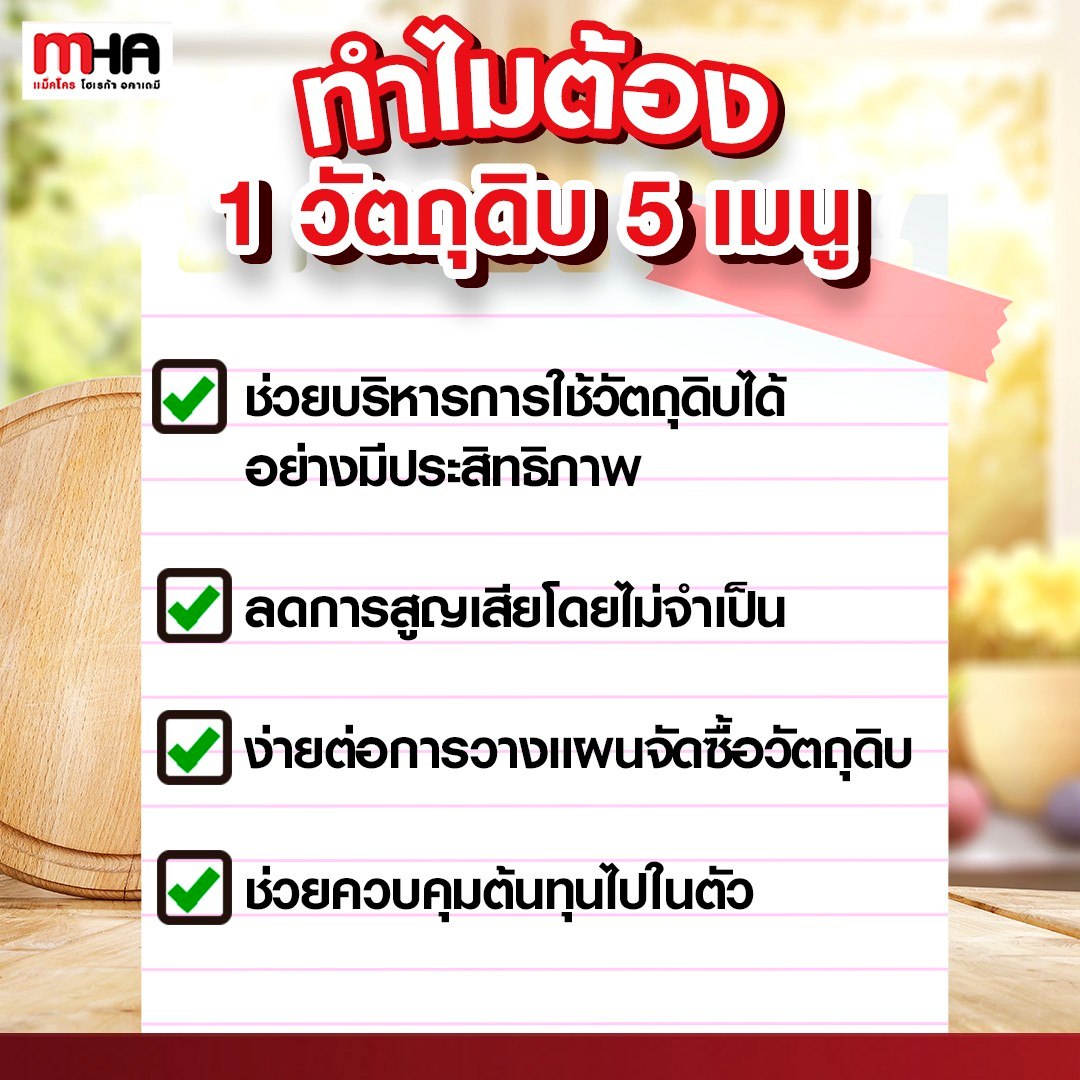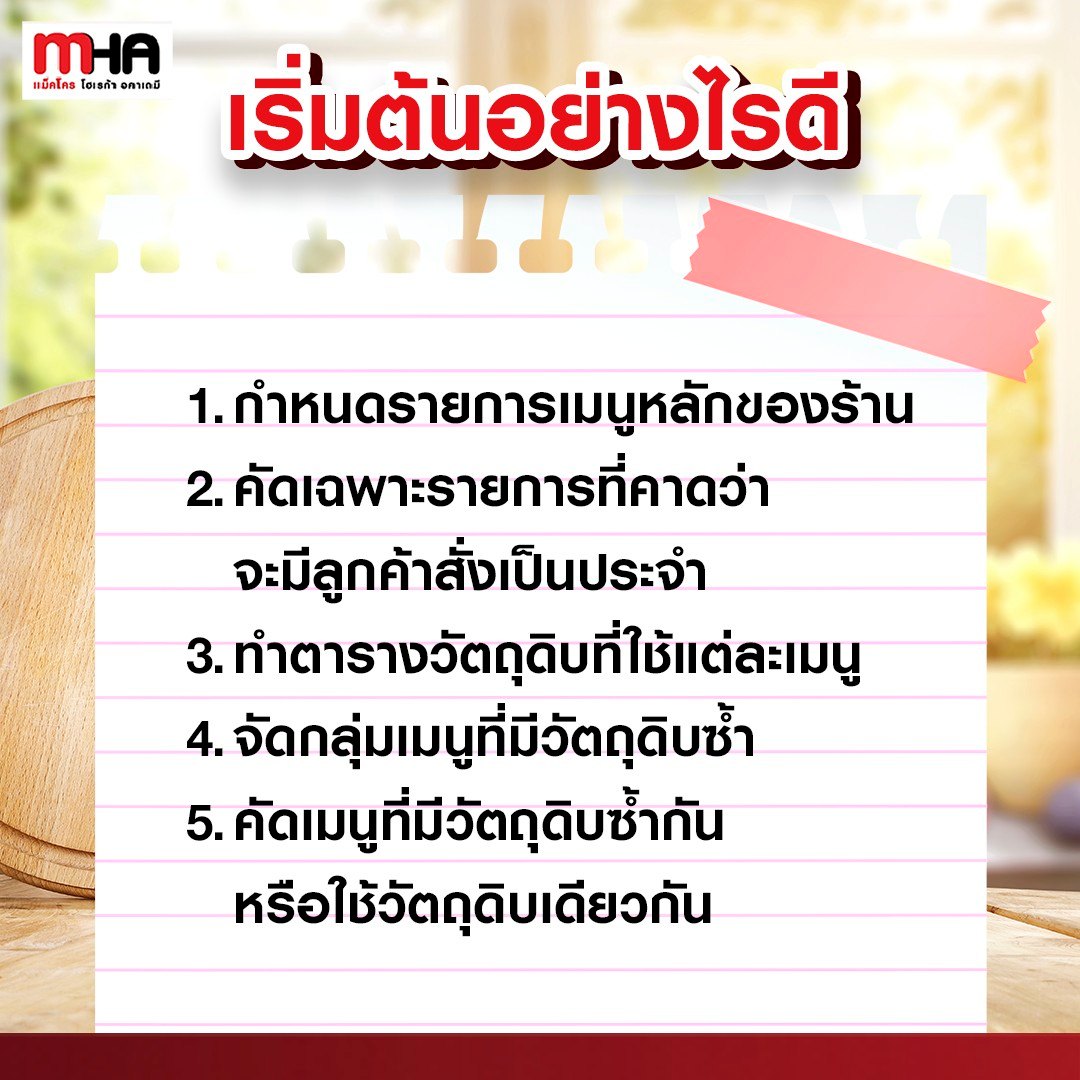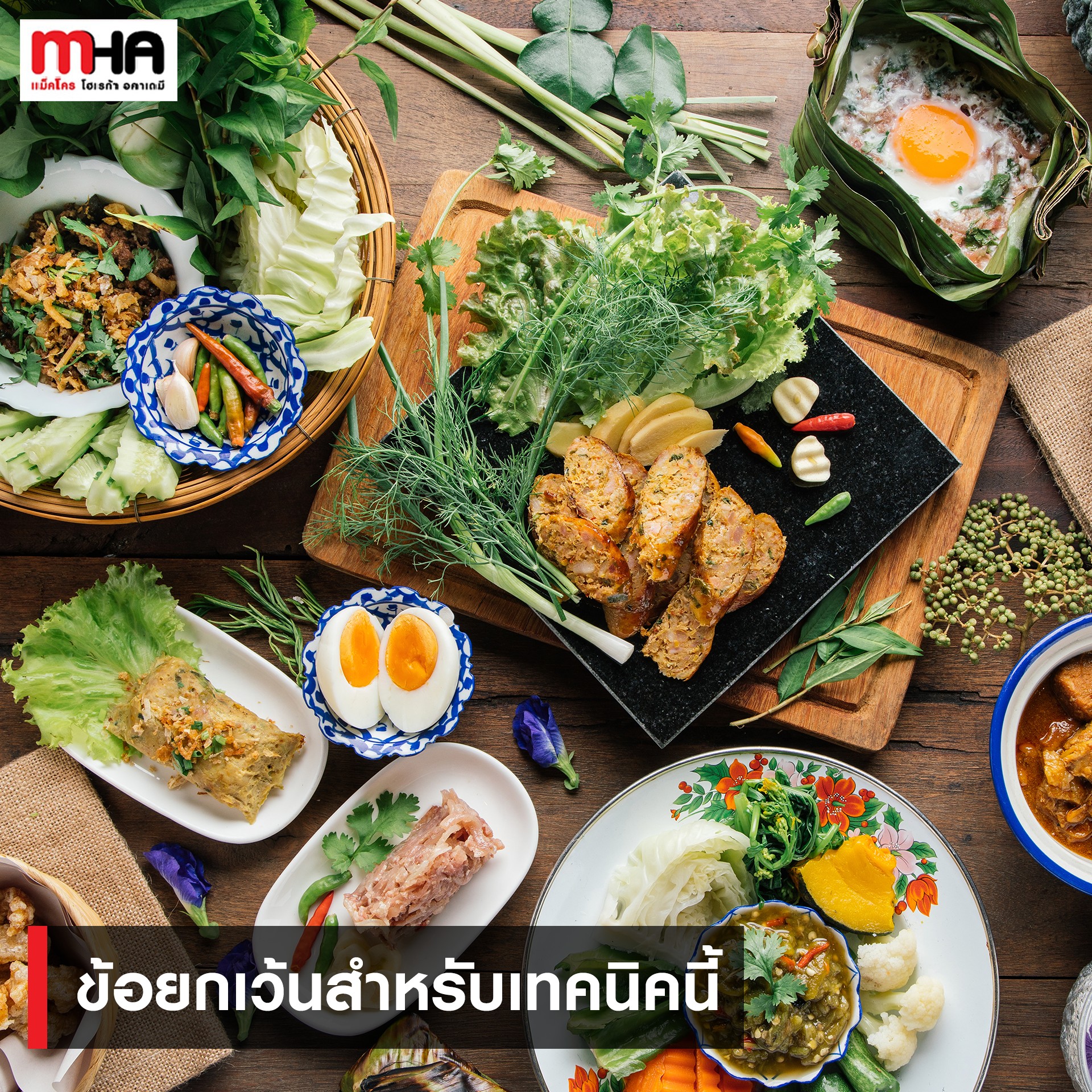

Why 1 ingredient for 5 dishes?
Think about a menu that is rarely ordered and uses different ingredients from other menus. There is a high chance that the ingredients will spoil before they can be used. Or if you make 2 menus, when someone orders them, there is a chance that there will be leftovers. This is a waste of cost.
Using the technique of 1 ingredient, 5 dishes in planning your restaurant's menu will help manage the use of ingredients more efficiently and reduce unnecessary waste because the menus selected must be at least the top 5 most frequently ordered by customers. This means that at least this ingredient will definitely be used.
It is also easier to plan the purchase of ingredients because there is no need to order many types of ingredients and it helps control costs. This technique is suitable for general restaurants, including restaurants that do not have a lot of menus to choose from because customers do not need many choices but still want some variety.

How to get started?
This technique can be used for both new and long-established restaurants. For new restaurants, this technique is helpful in defining the restaurant's menu. Start with:
1. Set the main menu of the restaurant as much as the chef can cook and make it into as many items as possible.
2. Select only items that are expected to be ordered regularly by customers. This may require asking a number of target groups to obtain preliminary information for screening the menu.
3. Make a table of ingredients used for each menu, starting with the main menu such as meat, vegetables, and other ingredients completely.
4. Try to see which menus have the same ingredients and try to group them.
5. Then select the menu that has the most duplicate ingredients or uses the same ingredients the most.
For example: The menu that can be made: Fried rice types include fried rice with pork, chicken, egg, shrimp, beef, seafood, and sour sausage. Basil rice types include basil with minced pork, chicken, squid, seafood, and shrimp with basil. Garlic rice types include rice topped with garlic pork, chicken, shrimp, beef, and seafood. Other types of rice toppings include rice with pork fried in oyster sauce, chicken, shrimp, beef, seafood, minced pork omelet, and sour sausage omelet. Other types include sun-dried pork rice, fried pork with garlic and pepper, and sour sausage coated in egg.
When looking at the ingredients, you will find that pork can be used to make almost every menu. Therefore, pork dishes should be the main menu, while sun-dried pork is a menu that should be removed because it is a menu-specific ingredient. As for fermented pork, you still have to hope that customers will order it often. If you open the shop for a while and there are few orders, you can gradually remove it from the menu.
For restaurants that have been open for a while, first try to examine which ingredients are used the least or which ingredients are wasted the most. You should reconsider the menu. For example, if someone orders stir-fried pork with salted egg every once in a while, you might want to consider cutting it out.

Exceptions to this technique
However, there are exceptions to this technique, such as the beef rice bowl menu, which is the only menu of the restaurant that uses beef, but the sales each month are very good and the profit is also high. This type of menu should not be cut. But if there is a menu that customers order once in a while and uses ingredients that are not the same as others, then it should be considered to cut it from the menu. Or for a newly opened restaurant, if you are confident that the menu that uses specific ingredients is the signature menu of the restaurant that cannot be missed, then you should keep that menu and focus on promoting it to customers when they receive the order instead.
There are many more techniques in menu planning or menu design to win over customers and generate more income. You can study more in the course “Menu Design to Win Over Customers and Generate Income Like a Pro” by Ajarn Tai Pornchai Nitmethawong, a guru in restaurant management with 10 years of experience, Co-Founder of Facebook Page “True Friend Restaurant” and Restaurant Consultant. Learn for free at => https://bit.ly/3O2f0x1 (Please log in before entering the course)





